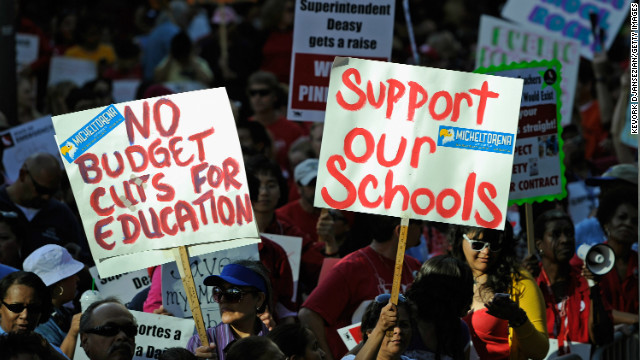New Study Connects the Dots Between School Funding Choices and Student Achievement, Highlighting the Dangers of Retrenchment in Courts

The Educational Testing Service (ETS) released a new study by Bruce D. Baker, Danielle Farrie, and David G. Sciarra, analyzing the connections between improving school finance systems,improving educational outcomes and closing achievement gaps. After working through multiple factors and layers of data, the report zeroes in on the effects of school funding on pupil-teacher ratios and salaries. It them shows how those two factors relate to the achievement gap between low and middle-income students. The findings are rather impressive:
- These higher spending levels translate into higher statewide staffing levels—more teaching staff per pupil.
- These higher spending levels translate into more competitive statewide teacher wages.
- Increased targeted staffing to higher poverty schools within states is associated both with higher measured outcomes of children from low-income families and with smaller achievement gaps between children from low-income and children from non-low-income families.
More specifically, they "show that the level and distribution of pupil-to-teacher ratios are highly and consistently sensitive, both across states and over time, to changes to the level and distribution of school district current spending; that is, more spending, holding other factors constant, drives lower pupil-to-teacher ratios, and fairer spending across districts within states drives fairer pupil-to-teacher ratios. Spending also drives the competitiveness of teacher wages. States with higher spending have more competitive wages, all else being equal. And as one might expect, available spending and the equity of that spending remain contingent on the revenues that support that spending. Increased state support provides the opportunity for improved equity of current spending, whereas the stability of both state and local revenues dictates the overall level of spending."
The point about sensitivity to change "over time" is key to appreciating the significance of the deep cuts in education funding since the recession and the failure to replenish those funds even once state tax revenues rebounded. As I argue in a recent article, courts would normally serve as the check against states' wholesale abandonment of their constitutional duty to deliver equal and adequate educational opportunities. Unfortunately, as the Texas Supreme Court decision from last week shows, courts are increasingly shying away from their duty. As they do so, they place the very right to education in jeopardy both in the short and long term--the effects of which will be far worse than the legislative stand-offs that courts are seeking to avoid now. A full discussion of this new trend is available here.

